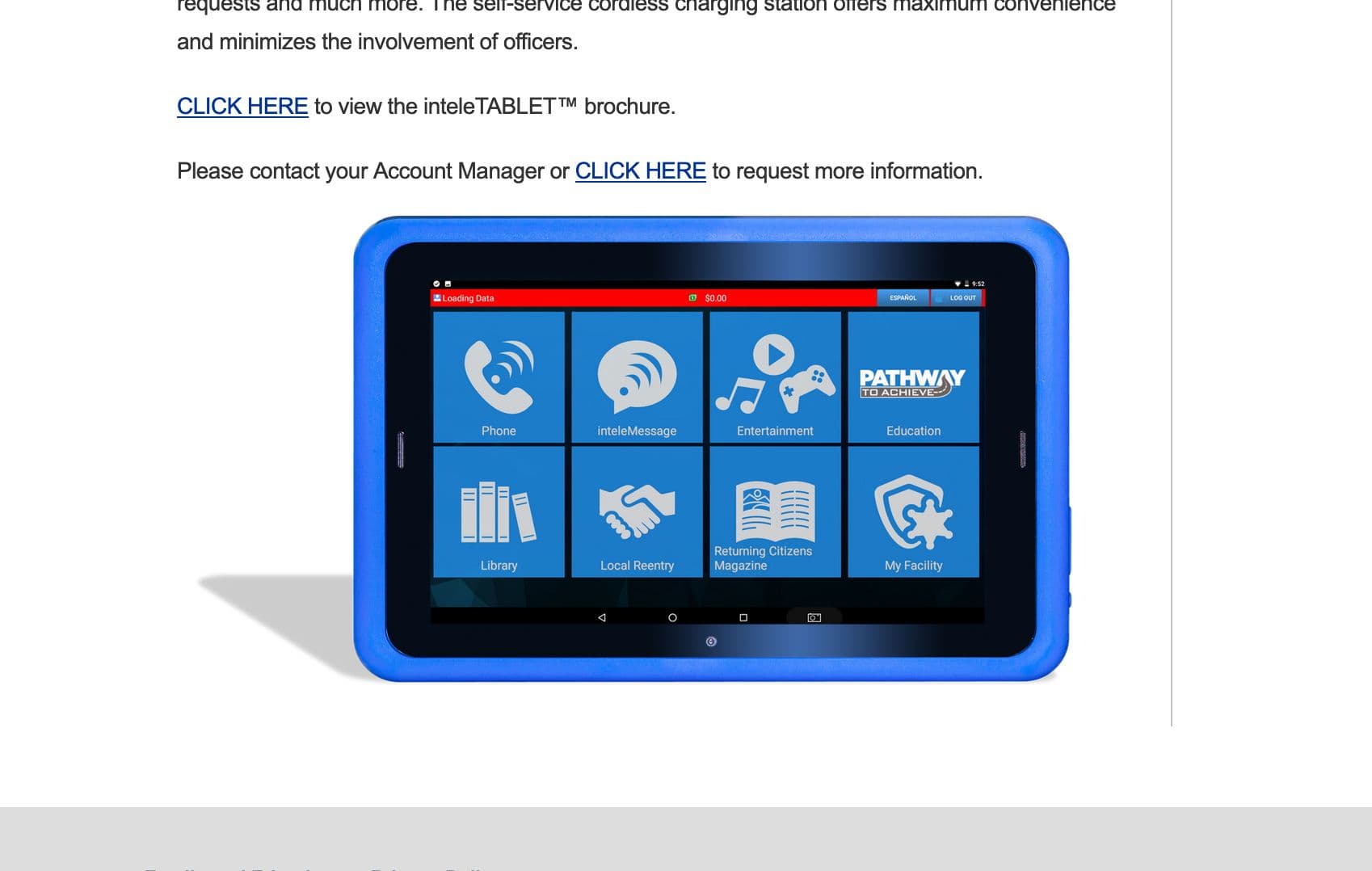Paytel - inteleVISIT

Paytel is a telecommunications company that facilitates communication between inmates and their friends/family outside of correctional facilities. Working with Paytel, I contributed to developing a platform for one of their products called inteleVISIT Video Visitation - a web-based video visitation service that offers an alternative to traditional in-person visits.
The platform is split up into multiple applications, including:
- Customer front-end application
- Admin front-end Application
- Back-end server application
The front-end applications are powered by NextJS, with peer-to-peer video streaming and real-time functionality implemented via SimpleWebRTC and websocket integrations. The back-end application is built using NodeJS + Express + Prisma (PostgreSQL). The customer application runs on Paytel's proprietary inteleTABLETs.

Paytel inteleTABLET
During my time working on inteleVISIT, I implemented many end-to-end features and flows across the platform. Some of the features/flows I worked on include:
- Customer ID upload flows and integration with AWS S3
- Visitation and reservation scheduling UI, UX, queries, and algorithms
- Real-time core functionality (such as call monitoring via WebRTC) and interactions (via websockets)
- OAuth implementation and integration
- End-to-end user (customer, inmate, facility, administrator) data management flows
- Logging/monitoring implementation via Datadog and winston,
- and much more.
inteleVISIT was my introductory project to Stack Five. Unlike many of my previous projects that heavily emphasized on design and UI, this project leans toward functionality with heavier emphasis on API development. The project was also fairly large; the platform had many moving parts and often called for collaboration with other development teams at Paytel for integrations to their ecosystem. The scale and complexity of the project made it a great learning opportunity across the stack, furthering my experience in both front-end and back-end development.
